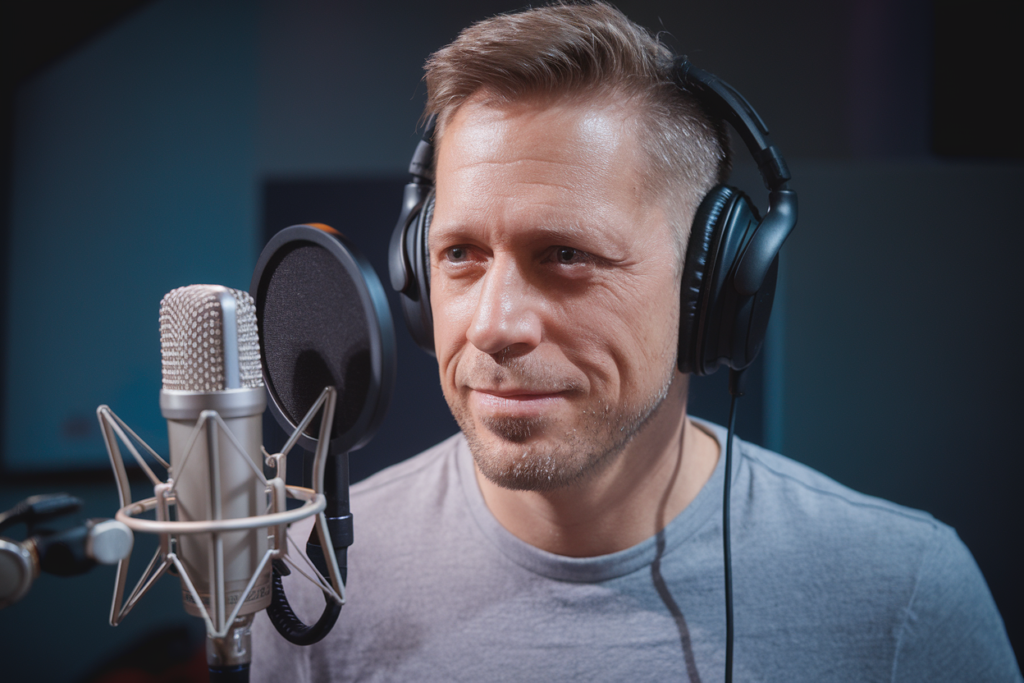Key Takeaways
- Distinctiveness of Bavarian German: Bavarian German features unique pronunciation and vocabulary that set it apart from other dialects, often making it challenging for speakers from different regions to understand.
- Historical Roots: The evolution of Bavarian German is deeply influenced by historical events and migrations, leading to a rich cultural identity that differentiates it from Standard High German (Hochdeutsch).
- Geographical Variations: Within Bavaria and parts of Austria, there are regional differences in dialects such as East Bavarian and West Bavarian, which contribute to communication barriers among locals.
- Phonetic Characteristics: Unique phonetic traits, including softer ‘ch’ sounds and elongated vowels, give Bavarian German a melodic quality compared to the sharper pronunciations found in Standard German.
- Cultural Significance: The dialect embodies local traditions and values; expressions like “Grüß Gott” deepen community ties and reflect the pride residents have in their linguistic heritage.
- Importance for Voice Talent: Understanding the nuances of Bavarian German is crucial for voice artists aiming to deliver authentic performances that resonate with local audiences.
Ever wondered why Bavarian German sounds so different from other German dialects? If you’ve ever tried to understand a conversation in Bavaria, you know it can feel like a whole new language. With its unique pronunciation and vocabulary, Bavarian German stands out among the diverse tapestry of German dialects.
Overview of German Dialects
German dialects showcase a rich tapestry of linguistic diversity across the country. Standard German, known as Hochdeutsch, serves as the official language, but regional dialects bring unique flavors to communication. Some prominent dialect groups include Low German (Plattdeutsch), Middle German (Mitteldeutsch), and Upper German (Oberdeutsch).
Bavarian German stands out within the Upper German group. It features distinct pronunciation and vocabulary that can perplex even native speakers from other regions. For instance, words like “Grüß Gott” (God greet you) reflect cultural nuances not found in standard forms.
The geographical spread influences dialect characteristics significantly. In areas like Bavaria and Austria, you’ll notice variations in intonation and word choice compared to northern regions where Low German predominates. These differences create barriers for understanding among speakers from different areas.
As you explore these dialects, consider how they impact voiceover work. A voice artist proficient in Bavarian may deliver authentic performances that resonate deeply with local audiences. Understanding these nuances can enhance your project’s authenticity when selecting voice talent for regional content.
Knowing about the diverse landscape of German dialects enriches your comprehension of Bavarian German’s uniqueness compared to its counterparts across Germany.
Understanding Bavarian German
Bavarian German stands out within the landscape of German dialects, showcasing unique traits in pronunciation and vocabulary that often seem foreign to speakers from other regions. Its distinctiveness can make conversations in Bavaria challenging for those unfamiliar with it.
Historical Background
Bavarian German has roots tracing back to the early medieval period, influenced by various historical events and migrations. The language evolved significantly due to interactions with neighboring cultures and languages. By the 19th century, Bavarians began embracing their dialect as a point of pride, differentiating themselves from Standard German (Hochdeutsch). This historical evolution shaped not just the language but also regional identity, laying the groundwork for its rich cultural expressions today.
Geographic Distribution
Geographically, Bavarian German is primarily spoken in Bavaria and parts of Austria. Within these areas, you’ll find variations like East Bavarian and West Bavarian dialects. These regional differences create a tapestry of linguistic diversity that reflects local customs and traditions. The geographical spread contributes to communication barriers among speakers from different areas; someone from Munich might struggle to understand a conversation in rural Upper Bavaria or Tyrol due to varying pronunciations and word choices.
Understanding these nuances is vital for anyone looking to engage authentically with Bavarian audiences. For instance, voice artists who master these dialects can deliver performances that resonate deeply with local listeners, enhancing the overall impact of their work.
Characteristics of Bavarian German
Bavarian German stands out with its unique features, making it distinct from other German dialects. Understanding these characteristics can deepen your appreciation for the language and help you communicate effectively in Bavaria.
Phonetic Features
Bavarian German boasts unique phonetic traits that set it apart. For instance, speakers often use a softer ‘ch’ sound in words like “ich” compared to the sharper pronunciation found in Standard German. This variation can make Bavarian sound musical or even melodic at times. Additionally, vowel sounds differ; you’ll notice elongated vowels that add richness to the speech. The intonation patterns also shift, giving conversations an expressive quality that’s difficult to replicate in standard forms of communication.
Vocabulary Differences
Bavarian vocabulary includes specific terms and phrases that aren’t commonly found in Standard German. Words like “Grüß Gott” serve as greetings rather than the typical “Hallo.” You might encounter regional expressions like “Schmankerl” for treats or delicacies, showcasing local culture through language. These distinctive words not only enrich conversations but also contribute to a sense of identity among speakers.
Understanding these characteristics enhances your connection with Bavarian culture and prepares you for engaging conversations during visits or interactions with locals. If you’re considering voiceover work involving Bavarian dialects, grasping these nuances can elevate your performance, ensuring authenticity resonates with the audience.
Comparison with Other German Dialects
Bavarian German stands out among various dialects in the German language landscape. Its distinct pronunciation and vocabulary create noticeable differences when compared to other regional forms.
High German vs. Bavarian German
High German, or Hochdeutsch, serves as the standard form of the language across Germany, Austria, and Switzerland. While it’s widely taught in schools and used in formal settings, Bavarian German retains unique phonetic features that can confuse speakers of High German. For instance, words are often pronounced differently; “ich” (I) becomes “i” in Bavarian dialects. This divergence can lead to misunderstandings during conversations. Those looking for voiceover talent specializing in Bavarian dialects should prioritize artists familiar with these nuances for authentic delivery.
Low German vs. Bavarian German
Low German (Plattdeutsch) differs significantly from both Standard High German and Bavarian. It has roots closer to Dutch than to High or Upper Germans like Bavarians speak today. Low Germans typically reside in northern regions of Germany and their speech showcases simpler vowel sounds and fewer diphthongs compared to Bavarian pronunciations. When considering voice actors who embody regional authenticity, understanding these linguistic distinctions ensures you choose professionals capable of resonating with local audiences.
Swabian and Swiss German Comparisons
Swabian dialect is another variant within Southern Germany that shares some similarities with Bavarian yet remains distinct enough to stand apart. Swabians often use softer consonants and have unique vocabulary elements influenced by their history and geographic location near Bavaria. Conversely, Swiss German presents even greater variability due to its multiple cantonal variations; each region carries its own characteristics that can baffle outsiders—or even those from Bavaria! When seeking a voice over artist skilled in regional forms, recognize how awareness of these differences enhances character portrayal and audience connection through nuanced performances.
Understanding how Bavarian compares with other dialects not only enriches your knowledge but also guides your choices when selecting voice talent for projects requiring authentic regional flair.
Cultural Significance of Bavarian German
Bavarian German holds deep cultural significance, reflecting the history and identity of its speakers. This dialect represents more than just a way of communicating; it embodies traditions, values, and local pride within Bavaria and parts of Austria.
Bavarians often express their regional identity through their dialect. The language serves as a connection to local customs, festivals, and daily life. Terms like “Grüß Gott” for greetings or “Schmankerl” for treats showcase unique flavors that resonate with the community. These expressions foster a sense of belonging among locals while also posing challenges for outsiders trying to engage in conversation.
The distinct phonetic features of Bavarian German contribute to its richness. You might notice softer ‘ch’ sounds or elongated vowels that give the speech a musical quality—one that captivates both listeners and speakers alike. For voice artists aiming to deliver authentic performances, mastering these nuances is crucial. A well-executed voiceover using Bavarian German can make content feel more relatable and genuine, enhancing audience engagement.
Moreover, understanding the variations within Bavarian German—including East Bavarian and West Bavarian dialects—adds layers to your appreciation of this rich linguistic tapestry. Each regional variation not only showcases local customs but also poses communication barriers between speakers from different areas.
Recognizing these cultural elements proves essential when selecting voice talent for projects requiring authenticity. A knowledgeable voice over actor familiar with Bavarian nuances can significantly elevate your project by resonating with local audiences on a deeper level. Embracing these characteristics enhances overall comprehension while preparing you for engaging conversations with locals who take great pride in their dialect.
Exploring Bavarian German’s cultural significance reveals how language intertwines with identity and community ties, enriching interactions in ways that transcend mere words.
Conclusion
Bavarian German stands out not just as a dialect but as a vibrant expression of culture and identity. Its unique characteristics can be both intriguing and challenging for those unfamiliar with the nuances of regional speech. By appreciating its distinct phonetic features and rich vocabulary, you’ll gain deeper insights into Bavarian life and traditions.
Understanding these differences enhances your cultural competence whether you’re engaging with locals or selecting voice talent for projects. Embracing the diversity within German dialects fosters greater connection and appreciation for this fascinating language landscape. So if you find yourself in Bavaria or interacting with Bavarians, don’t hesitate to dive into their linguistic world—it’s sure to enrich your experience.
Frequently Asked Questions
What is Bavarian German?
Bavarian German is a distinct dialect within the Upper German group, predominantly spoken in Bavaria and parts of Austria. It features unique pronunciation, vocabulary, and regional variations that can make it challenging for speakers from other regions to understand.
How does Bavarian German differ from Standard German?
While Standard German (Hochdeutsch) serves as the official language, Bavarian German has unique phonetic characteristics and specific terms that reflect local culture. These differences can lead to misunderstandings between Bavarian speakers and those who primarily speak Standard German.
What are some key features of Bavarian pronunciation?
Bavarian pronunciation includes softer ‘ch’ sounds and elongated vowels, giving the dialect a melodic quality. These phonetic traits contribute to its distinctiveness compared to other German dialects.
Why is understanding Bavarian important for voice actors?
Understanding Bavarian is crucial for voice actors working on projects aimed at local audiences. Proficiency in this dialect ensures authentic performances that resonate with listeners while honoring regional identity.
Are there different variations of Bavarian German?
Yes, there are several variations of Bavarian German, including East Bavarian and West Bavarian. These regional differences often reflect local customs and traditions, leading to communication challenges among speakers from different areas.
How did Bavarian German develop historically?
Bavarian German traces its roots back to the early medieval period and evolved through interactions with neighboring cultures. By the 19th century, it became a point of pride among locals, shaping both language and regional identity.
What cultural significance does Bavarian German hold?
Bavarian German embodies the history, values, and traditions of its speakers. It serves as a connection to local customs and daily life while enriching the linguistic landscape with its unique expressions.
How do other dialects compare with Bavarian German?
Other dialects like Low German or Swabian have significant pronunciation differences from Bavarian. Recognizing these distinctions is essential when selecting voice talent for projects requiring authentic regional flair.







